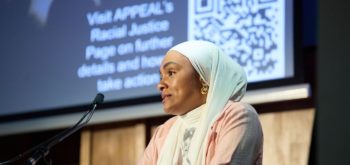[contextly_auto_sidebar id=”qMcKOslQ92mHhkaOFBWWKyRrzy1RMNgX”]
Last week the nation found out the name of the killer of teacher Anne Maguire. Although it may sell newspapers what interests the public is not the same as the public interest. We may want to know more about this perpetrator but is that just prurience?
- This article is written by both Julie Davies and Dr Eleanor Peters, senior lecturers in the department of law and criminology at Edge Hill University
- In his judgment Mr Justice Coulson said he came down ‘firmly on the side of the public interest‘. ‘Ill-informed commentators may scoff, but those of us involved in the criminal justice system know that deterrence will almost always be a factor in the naming of those involved in offences such as this.’
‘This is an exceptional case. Public interest has been huge. There are wider issues at stake, such as the safety of teachers, the possibility of American-style security measures in schools, and the dangers of “internet loners” concocting violent fantasies on the internet.’
Mr Justice Coulson
In many countries of the world he would not have been named. In many countries he would not have been prosecuted because at 15 years of age he would be too young to be held criminally responsible. At just 10, England and Wales has one of the lowest ages of criminal responsibility in Europe.
There are different reactions to the sentencing of children for heinous crimes across the globe; comparative studies have demonstrated that the rights of the child are not always paramount in the eyes of a demanding, authoritarian, populist media and why should a senior member of the judiciary listen to the demands of a baying media whose motivation is to sell papers irrespective of the complexities of the case?
This case is not without its tragedies or complexities. The horrific murder of a well-loved teacher, the failure of a society and system that did not recognise or respond to what were obvious problems affecting a young person. We may never know what prompted him to carry out this shocking crime, what we do know is that he had publicly demonstrated his dislike of Anne.
Perhaps this was negated owing to the fact that he was considered a bright pupil from a respectable family. Whilst it’s not wise to presume, assumptions are always made, especially by those baying for a ‘story’. There has been much debate regarding the treatment of children by the CJS – not much about whether their identity need to be protected.
Children’s identities when involved in court as suspect, victim or witness have long been protected. Section 39 orders, made under the Children and Young Persons Act 1933, are discretionary orders that prevent identification of children or young persons. In imposing an order, the judge should balance the interests of the public with the interests of the child or young person. The widely accepted basis for Section 39 orders is that children and young persons should be given the chance of rehabilitation and returning to society. Of course publicly identifying the child in a notorious case such as this one can lead to problems for the child and his family.
At the heart of the UN Convention on the Rights of the Child lies a commitment to provide a set of inalienable rights that serve to protect the child irrespective of whether or not they fall within the remit of the criminal justice system. Yet as Lord Harris, and many others working within criminal justice opine, far too many vulnerable people prone to self-harm and suicide people are being incarcerated. The fact that so many of these are children is simply immoral.






